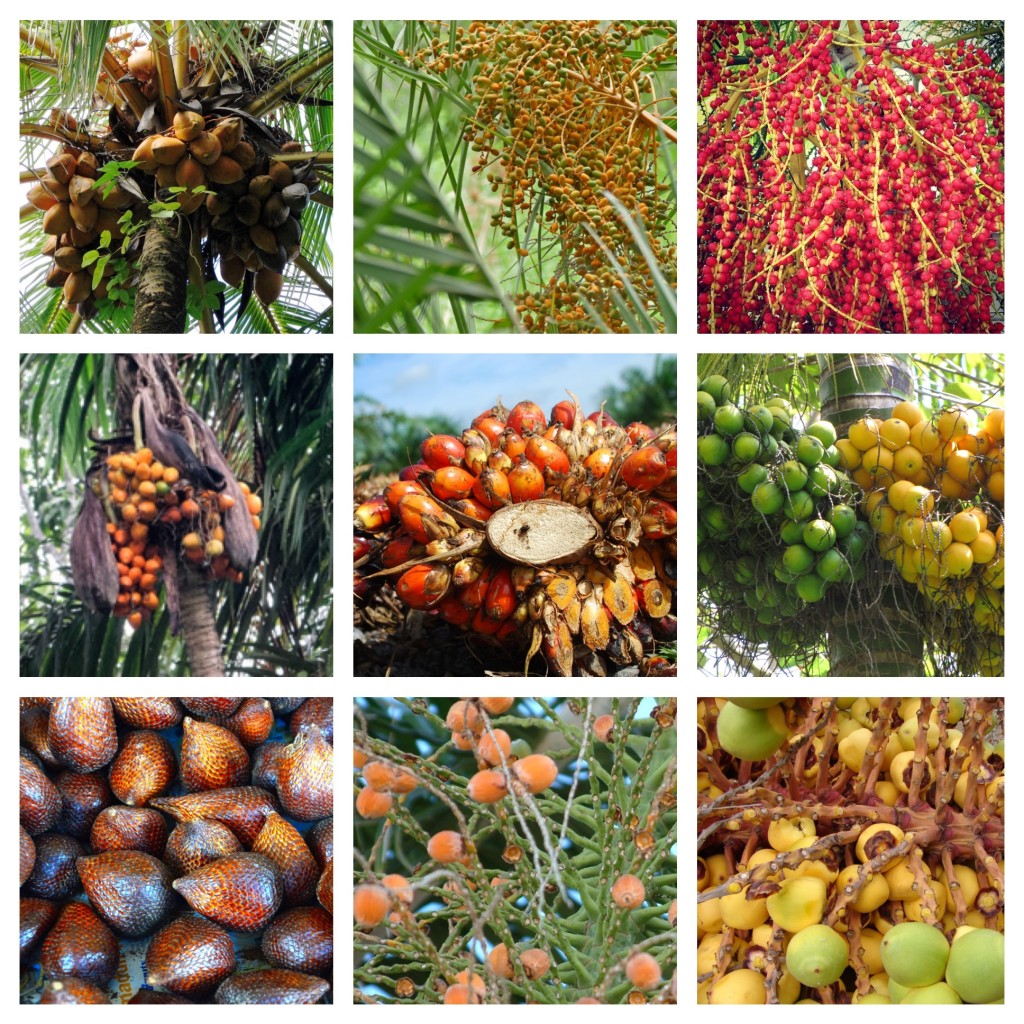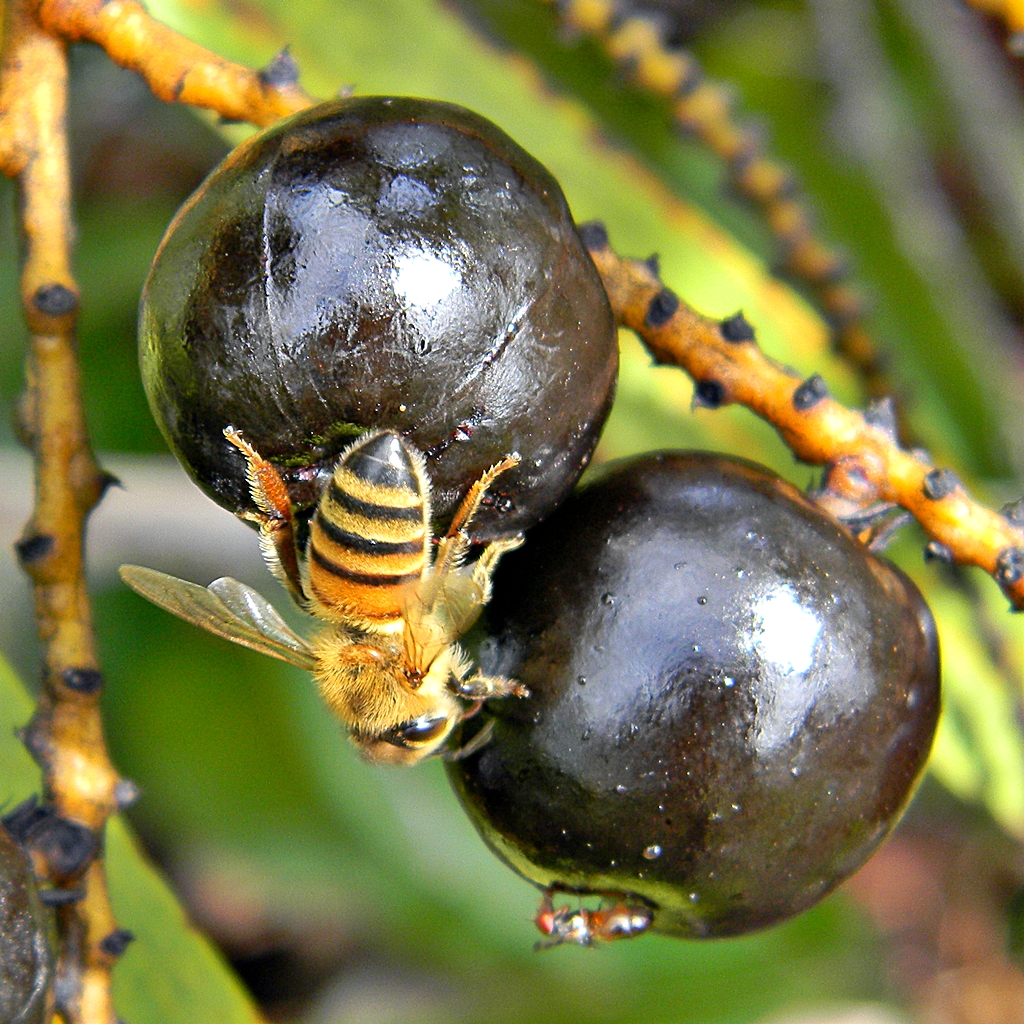
Palms have been a source of food for many generations, and this installment of “Palm Fact of the Week” lists the world’s 10 most common palms that provide edible fruits.
- Coconut palm – the fruits are commonly eaten around the world, the oil is a common cooking oil, and the water inside the young coconut is also a widely consumed beverage
- Date palm – dates are a staple food in the Middle East and have been cultivated since ancient times (origin is likely in/around Mesopotamia and Egypt)
-
Açaí palm – the açaí palm is cultivated for both it’s fruit (known as açaí berry), and for hearts of palm.
- Peach palm – native to Central and South America, the peach palm grows nutritious fruits that have been used as food for centuries. The fruits have to be cooked for 3-5 hours in order to be consumed. These palms are also cultivated for hearts of palm and are also used to feed animals.
- Oil palm – this palm is widely used for commercial palm oil production, and the oil contains more saturated fats than other vegetable based oils, and contains zero trans fats. It is commonly used in fried foods.
- Betel Nut palm – also known as the areca nut, a few slices of the betel nut is commonly wrapped – along with spices – into betel leaves and chewed for its mild stimulant effects, similar to how tobacco is chewed. Chewing betel nut is a common and important custom in Asian and Oceanic countries.
- Snake palm – also known as “salak”, this palm species is native to Java and Sumatra. The fruit is refered to as “snake fruit” due to the reddish-brown scaly skin. When peeled back, the pulp of the fruit is edible and is sweet and acidic.
- Jelly palm – the jelly palm fruits are edible, and are often used to make alcoholic beverages in South America, where the tree is native
- Chilean wine palm – the common name of this palm refers to the past use of the sap from the trunk of this palm to produce a fermented beverage. The sap is also boiled down into a syrup and sold locally in South America and the Canary Islands as miel de palma.
- Saw Palmetto palm – heralded for its medicinal uses, saw palmetto fruits are enriched with fatty acids and phytosterols, and the extract has been promoted as useful for people with prostate cancer.

Other species noted for their edible fruit around the world (though primarily eaten by locals) include several species of Acrocomia, Actinorhytis, Allagoptera, Astrocaryum, Attalea, Bactris, Borassus,Brahea edulis ((Brahea edulis), Calamus, Carpoxylon, Chamaerops, Clinostigma, Copernicia, Cryosophila, Daemonorops, Dypsis (many species), Gulubia, Hyphaene, Jubaeaopsis, Latania, Loxococcos, Nypa, Oenocarpus, Parajubaea, many species of Phoenix, Pinanga, Ptychococcus, Sabal, Syagrus, Washingtonia filifera (California fan palm). (Source: Dave’s Garden)
Want to “virtually explore” the Merwin Palm Collection? Search through our archive of Palm Facts of the Week, featuring palms hand-planted by W.S Merwin. To search through the Online Merwin Palm Database, visit this link.
If you’re inspired to help The Merwin Conservancy preserve and care for the Merwin Palm Collection into the future, please consider making a tax-deductible donation.

